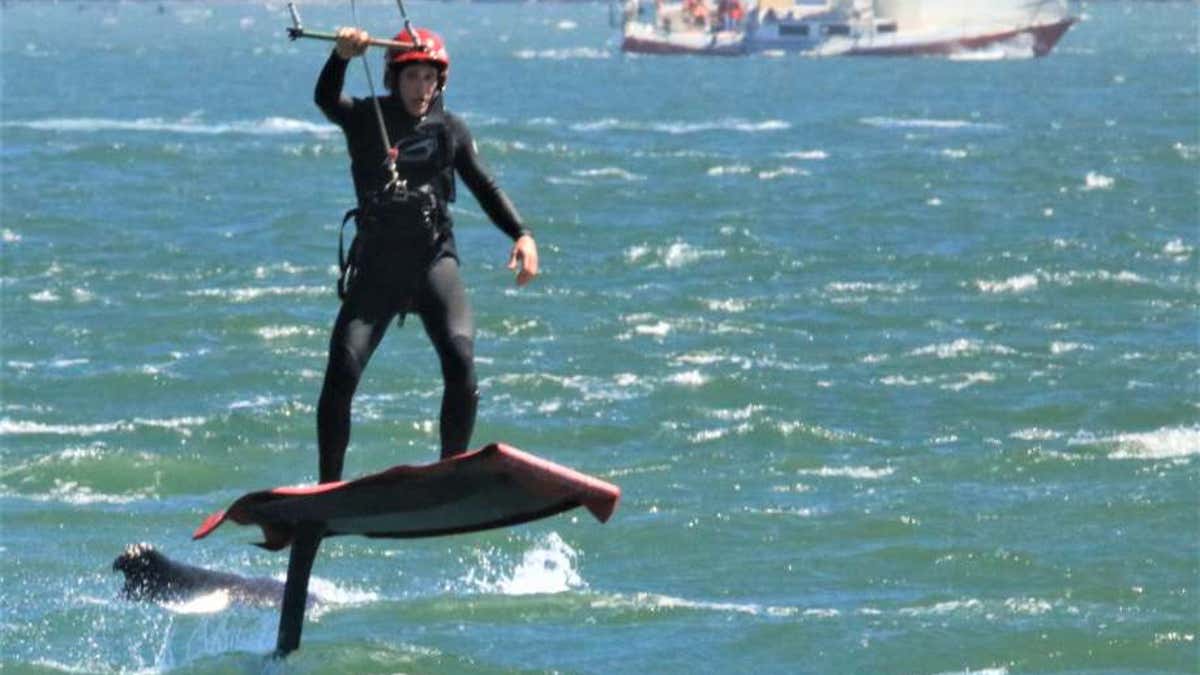
A kite surfer in California is spotted dodging a humpback whale as he rides the waves near San Francisco's Golden Gate Bridge. (Jennifer Hendershot/San Francisco Whale Tours)
A kite surfer in California just narrowly missed a giant humpback while riding waves around San Francisco's Golden Gate Bridge this week.
A tour group was whale watching during an afternoon excursion with San Francisco Whale Tours when they spotted a man dodging the body of a whale. Photographer Jennifer Hendershot snapped a photo, capturing the surfer's shocked facial expression.
"It was quite windy that afternoon so there were lots of wind surfers and kite boarders out," Michael Pierson, spokesperson for San Francisco Whale Tours, told SFGate on Thursday. "It's not uncommon for the kite boarders to circle around the boat as they seem to like to show off for the cameras."
"Boarders are usually more focused on what they're doing than where the whales are active."
Pierson said he's witnessed numerous "close calls" on the water.
BLUE WHALE CARCASS CARVED INTO, STOMPED ON BY TOURISTS TAKING SELFIES
"We're where the animals are and the boarders are usually more focused on what they're doing than where the whales are active," he explained to the San Francisco news site.
A video of a California kiteboarder gliding over a humpback off the coast of San Francisco’s Crissy Field Beach whale went viral in July. The man appeared to be surprised when he crashed into the whale.
“First drifted underneath, scaring the hell out of me, then made a turn and in 15 seconds came back on high speed, splashing fountains and rolling,” Andrei Grigoriev, who posted the footage on Facebook, wrote in a caption. “These guys r playing it hard.”
SCIENTISTS OBSERVE MALE ORCA KILL CALF IN FIRST-OF-ITS-KIND DISCOVERY
Humpback whales can measure up to 62 feet long — about the size of a bus, according to National Geographic. Typically, they're gentle creatures, feeding on krill, plankton and other small fish. But you don't want to get in a whale's way: they can pack a fierce "punch."
"Humpbacks are powerful swimmers, and they use their massive tail fin, called a fluke, to propel themselves through the water and sometimes completely out of it," National Georgraphic explains in a post on its website. "These whales, like others, regularly leap from the water, landing with a tremendous splash."